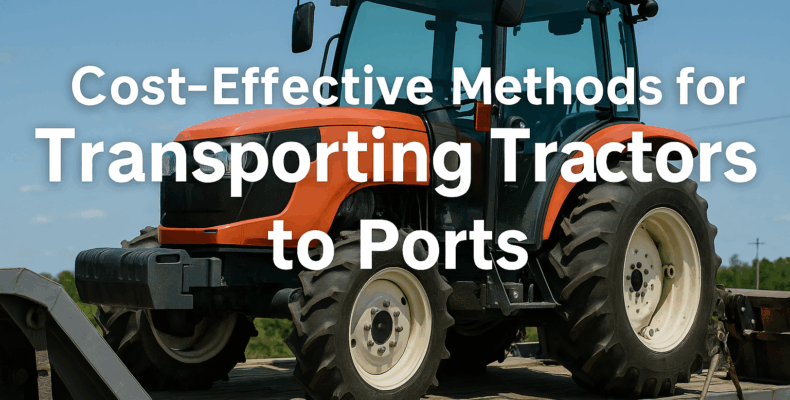When buying a used Japanese tractor for export, the journey doesn’t begin at sea—it begins on the road. Efficiently moving your tractor from the seller’s location to the nearest international port is a critical step in the export process. Choosing the right transport method can significantly reduce costs, speed up the delivery timeline, and protect your investment.
Below, we explore the best methods and costs involved in tractor transportation to ports, along with useful tips for overseas buyers looking for trusted partners.
1. Why Port Transport Planning Matters
Japanese tractors are built to last, but transporting them requires proper care. Improper logistics planning can lead to unexpected expenses, shipment delays, and even damage. Therefore, buyers must understand local logistics before finalizing a purchase.
In Japan, most used tractors are located in rural or inland regions. Consequently, the cost of moving a tractor to a port like Yokohama, Osaka, or Kobe may vary based on distance and accessibility.
2. Popular Transportation Methods
a. Flatbed Trucking
For local and short-distance movement, flatbed trucks are commonly used. These trucks are ideal for compact and medium-sized tractors. They provide fast and secure delivery to export ports.
b. Containerized Shipping Prep
Sometimes, tractors are moved to a container packing facility before heading to the port. This ensures safer loading and helps reduce damage risk during sea transport.
c. Towing (For Short Distance or Damaged Units)
If the tractor is non-functional or within 50km of the port, towing is another affordable option. However, this is less common for export-bound units.
3. Cost Breakdown for Domestic Transport
Here is a basic cost estimate for local tractor transport within Japan:
| Distance | Transport Type | Estimated Cost (USD) |
|---|---|---|
| Under 50 km | Towing or Flatbed | $150 – $300 |
| 50 – 200 km | Flatbed Truck | $300 – $600 |
| Over 200 km | Long-Haul Trucking | $600 – $900+ |
Note: These are general ranges. Prices may vary based on tractor size, pickup location, and traffic regulations.
4. Choosing the Right Transporter
Partnering with a reputable Japanese exporter can help you avoid common pitfalls. For example, experienced exporters have logistics partners who specialize in transporting tractors safely and affordably. They also provide clear photos, condition reports, and documentation during each step of the journey.
To find reliable partners, check out this recommended list:
👉 Top 5 Trusted Japanese Used Truck Exporters for Global Buyers
5. Tips for Lowering Transportation Costs
-
Bundle shipments: If you’re buying multiple tractors, ask your exporter to ship them together.
-
Choose port-friendly models: Compact tractors are easier and cheaper to move than oversized units.
-
Avoid remote areas: Buying from locations far from ports increases land transport costs.
-
Confirm loading capability: Ensure the seller can load the unit onto a truck, or extra loading charges may apply.
6. Summary: Plan Before You Purchase
In conclusion, transporting a tractor to a Japanese port involves more than just calling a truck. With careful planning and support from a trusted exporter, you can minimize costs, avoid delays, and ensure your equipment reaches the port in top condition. From flatbed trucking to container prep, each option has its place based on distance, tractor size, and budget.
For peace of mind and the best deals, always work with an experienced exporter who handles logistics from start to finish.
Want expert support for tractor export logistics?
Contact one of our Top 5 Trusted Japanese Exporters and get started today.
